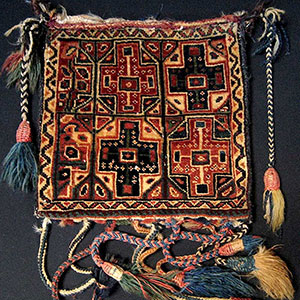The Gift
There are several senses of the word ‘gift’, but common to them all is the understanding that it is something impossible to obtain through our own efforts. We cannot meaningfully buy a gift for ourselves; it cannot be acquired through an act of will. A gift is bestowed upon us. Talent is thus considered a gift, for although it can be consciously developed, no amount of personal effort will cause it to appear in the first place.

Intuition and inspiration are also gifts, which is why it is often true that an artist is not deeply satisfied until there is a realisation that ‘I’ - the personal artist - did not make the work. The idea of a ‘gift’ also applies to the outer life of a work of art. As Lewis Hyde has written,1 the art that matters, which moves the heart, or revives the soul, or delights the senses, or offers courage for living, is work that is received by us as a gift. The work appeals to that part of our being which is given and not acquired.
A work of art or, of course, a piece of craftwork is a gift not a commodity. To put the case more pragmatically, works of art must exist simultaneously in two economies: those of the market and the gift. Nonetheless, only one of them is fundamental; a work of art can survive outside the marketplace, but where there is no gift there is no art. Furthermore, it is possible to damage a work of art by converting it into pure commodity. The ‘gift’ of the work places real constraints on the way art is traded and sold.
These limitations are hard to accept at a time in which business and exchange consist almost exclusively in the purchase and sale of commodities. The mythology of our society suggests that getting rather than giving is the mark of a successful person. Lewis Hyde points out that in many tribal societies a gift that cannot be given or shared ceases to be a gift; the spirit of a gift is kept alive by its constant donation, a process that is often ritualized in many cultures. Similarly, in our own society we don’t deal in commodities when we wish to initiate or preserve ties of affection. Emotional connection precludes quantitative evaluation.
Manners or social pressure may sometimes oblige us to give to those for whom we feel no true affection, but such giving is hollow. A real gift stirs us because the underlying feeling brings us close to the giver, and what moves us, beyond the gift itself, is the promise of transformation, friendship, and affection. The sign of recognition of a gift is gratitude, and once that connection has been realized, it may be passed on again and again. An embodied gift – a true work of art, for instance – can reproduce the gifted state in the one who receives it, but to keep it alive it must keep moving.
This brief essay is an extract from ‘Questions of Travel’, a book published in 2009 by The Douglas Hyde Gallery, Trinity College, Dublin.
(1) ‘The Gift – How the Creative Spirit Transforms the World’, Lewis Hyde, Canongate, 2006.
